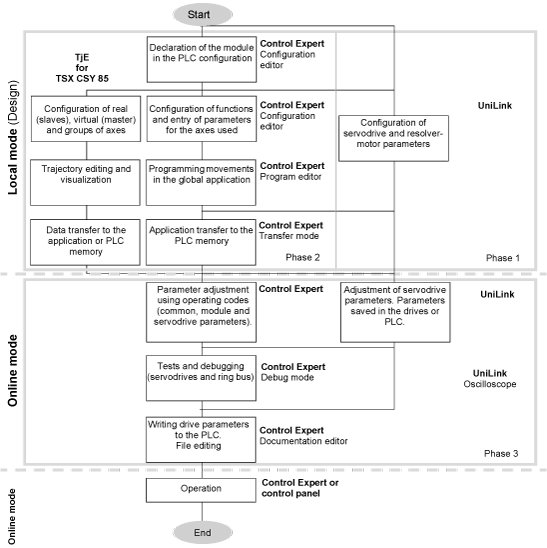An individual axis can be either a real axis connected to a servodrive, an imaginary axis, or a remote axis.
The groups of slave or coordinated axes consist of a collection of individual axes (real, imaginary or remote).
Implementation Methodology for a Real Axis
Before a real axis may be implemented, channel 0 must be enabled (all the channel 0 ALLOW bits: %Qr.m.0.18 and %Qr.m.0.26 at %Qr.m.0.31 are at status 1).
Implementation methodology for a real axis occurs in 3 phases:
-
Phase 1: Configuration of the servodrive using the UniLink software, creation of the trajectory using the TjE (Trajectory Editor) software.
-
Phase 2: configuring the TSX CSY 84 module, using the Control Expert configuration editor (module declaration and parameter configuration for all axes used),
-
Phase 3: Writing of the application program, transfer of this program to the PLC, transfer of trajectory data to the PLC, and application debugging.
NOTE: Enabling the servodrive via the Unilink software inhibits module commands to the servodrive. The servodrive must therefore be disabled before exiting the Unilink software.
Implementation Methodology for an Imaginary Axis
An imaginary axis is not connected to a servodrive (it is not a physical axis). Except for operations linked to a servodrive that does not exist, an imaginary axis is implemented in the same way as a real axis.
Implementation Methodology for a Remote Input
A remote input has far fewer functions than other kinds of individual axes. Its implementation is identical to the implementation of a real or imaginary axis in which only the position data needs to be configured. In this case, all operations linked to the servodrive or the programming of a movement do not exist.
Implementation Methodology for a Real Axis
Overview
